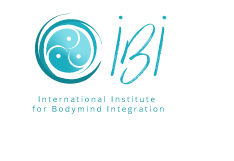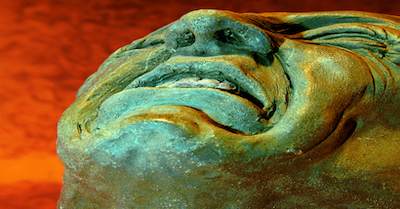The obsession of taking care of your body
Many people today are obsessed with taking care of their bodies—and it’s for a good reason, because our lives depend on it! But even though our physical health is important we should remind ourselves that our emotional, psychological and spiritual fitness is equally important.
Get in touch with your core vitality
Rhythmic Fitness, which originated with Jack Painter, PhD in the 1990s is an approach to fitness that overcomes the willful forcing of bodies to a bidding coming forth of the common and self-defeating view of such bodies as objects or instruments. Building on Eastern and Western traditions of bodywork, Rhythmic Fitness helps you connect with your core vitality. Your existing fitness experience may change as a result into a celebration and expression of your life, rather than a means to achieve idealized images of beauty, power, or efficiency.
Rhythmic Fitness is a dynamic, whole philosophy and approach to fitness you can use with the physical, psychological and spiritual exercises and routines you have already learned or are learning.
The goals of the rhythmic fitness
- To define “Rhythmic Fitness” as “Total Fitness” (with distinct physical, emotional, psychological and spiritual aspects).
- Rhythmic Fitness is a way to get in touch with your core vitality. Inside, under our tendency to manipulate ourselves, there is a flow of energy that flows in natural stages and can support our movements instead of frustrating us as we try to discipline ourselves. When we merge with our core vitality, we are not only stronger, more stable and have more stamina, we are also naturally more patient, smoother and more relaxed. We can then fully enjoy our exercises, whether it be personal performance, sports competition or creative play.
- Explore the 9 Stages of Core Vitality. Just as every living cell expands and contracts as in a rippling motion, our inner vitality prepares, grows, peaks, contracts and relaxes again. When we tune in to this inner rhythm, we can express ourselves more fully in our tissues, feelings and thoughts. We become more of what we can be. In each of the following stages, there are movements that take place easily, that support our physical, mental and emotional balance and allow us to flow from one stage to the next: 1) being at rest, 2) filling up, nourishing our bodymind, 3) opening the gates, exploring our movement possibilities 4) freeing power, really moving 5) making a final surge with excitement 6) peaking, 7) sustaining a plateau, finding our second breath 8) coming down, 9) creating rest, cool down. When we block or manipulate the flow of this vitality, our bodies pay a high price for the power they can only create temporarily.
- Surf the Fitness Wave. In order to get fit on all levels of our personality, it is important that our breathing, mobility, metabolism and muscle action are attuned to every phase of the natural energetic wave. Whatever movement we are making – racing to the finish; reaching high for a ball; do a somersault; etc. – all our experiences, all our body movements, want to find completion by themselves. But… if we sprint too fast, reach too high or run too fast, we will break the flow of our action and miss our attempt. We then act too early or too late, or with too much or too little effort. We “push” or “force” ourselves and so we lose our grace. On the other hand, we can learn to stick with, coincide with and flow with our own vital wave, in three ways: 1) we can stay within the energy stage we have developed (eg, not sprinting before or after its time); 2) we can flow smoothly from one stage to another (making our rising energy a sustainable plateau); 3) we can complete one wave of activity before starting a new one (resting between sets of tennis).
- Explore breath, self massage and accompanying images. In each of the phases of the road to “Total Fitness” we cultivate the unfolding nuclear energy by involving our entire self – body, feelings and mind. At rest we breathe slowly and softly without much charge or discharge. We simply move to keep our energy and balance – we lightly touch ourselves to hold and build our energy reservoir. And we orient ourselves without goals and we try not to fulfill idealized images. Later in the energetic wave, as our energy level swells by activating our energy in our body in motion, our breath is both fully charged and discharged. Our body always strives for full action. And while we find ways to open the body tissue in the movement, we create specific “attuned” images of what we want, effortlessly, and let go (surrender) at the peak of our movement.
- To introduce different sources of inspiration and components of Rhythmic fitness: In Rhythmic Fitness, we are standing on the shoulders of Gigantic Bodywork and Movement traditions, going from Dance Movement, Bio-Energetics, Core-Energetics, Awareness through Movement, Alexander Technique, Massage , Tai Chi, Tai Yoga, etc. etc. We find that Traditional Fitness Factors that are categorized as Health and Skill Related can be part of our workout or exercise routine. We can listen to our body and marvel at the multitude of possibilities to create better muscle tone, strength, flexibility, endurance, speed, aerobic endurance, agility, balance, reaction speed, strength and coordination … On a mental level we can enjoy and claim clarity, resilience (against: distraction, misinformation, discouragement, stagnation, self-sabotage, bad habits), mental self-efficacy (positive mental conditioning). By doing this, Rhythmic Fitness allows us to influence our levels of anxiety, depression, stress, self-esteem, satisfaction, positive relationships, responsibility, competence etc. We improve both the physical part of our condition and our psychological and spiritual condition.
Did you like this article? Share it in:





